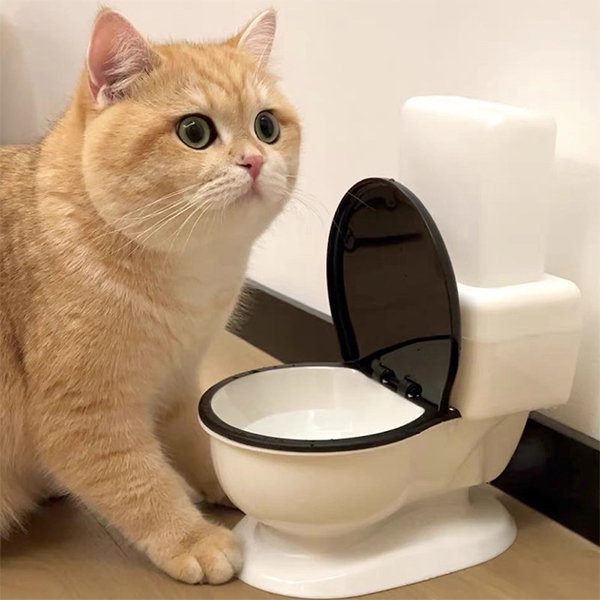Why You Should Never Flush Cat Poop Down Your Toilet - Important Information
Why You Should Never Flush Cat Poop Down Your Toilet - Important Information
Blog Article
What are your thoughts concerning How to Dispose of Cat Poop and Litter Without Plastic Bags?

Introduction
As cat owners, it's vital to bear in mind just how we take care of our feline friends' waste. While it may appear hassle-free to flush pet cat poop down the bathroom, this method can have detrimental repercussions for both the atmosphere and human wellness.
Ecological Impact
Flushing cat poop introduces damaging virus and bloodsuckers right into the water supply, posing a significant risk to aquatic communities. These pollutants can negatively impact aquatic life and concession water top quality.
Health and wellness Risks
In addition to environmental concerns, purging feline waste can also pose health and wellness risks to humans. Pet cat feces might consist of Toxoplasma gondii, a parasite that can cause toxoplasmosis-- a potentially extreme health problem, particularly for expectant women and individuals with damaged immune systems.
Alternatives to Flushing
Fortunately, there are safer and extra liable methods to deal with feline poop. Consider the adhering to alternatives:
1. Scoop and Dispose in Trash
The most typical approach of throwing away cat poop is to scoop it right into a naturally degradable bag and throw it in the garbage. Make certain to use a devoted trash scoop and throw away the waste immediately.
2. Use Biodegradable Litter
Select biodegradable cat trash made from products such as corn or wheat. These trashes are environmentally friendly and can be safely disposed of in the garbage.
3. Hide in the Yard
If you have a yard, think about burying feline waste in a designated location far from vegetable yards and water sources. Be sure to dig deep adequate to avoid contamination of groundwater.
4. Mount a Pet Waste Disposal System
Buy a family pet waste disposal system especially developed for pet cat waste. These systems utilize enzymes to break down the waste, reducing odor and ecological impact.
Verdict
Liable animal possession expands beyond offering food and sanctuary-- it additionally involves proper waste administration. By avoiding purging pet cat poop down the commode and opting for alternative disposal methods, we can reduce our ecological impact and shield human health and wellness.
Why Can’t I Flush Cat Poop?
It Spreads a Parasite
Cats are frequently infected with a parasite called toxoplasma gondii. The parasite causes an infection called toxoplasmosis. It is usually harmless to cats. The parasite only uses cat poop as a host for its eggs. Otherwise, the cat’s immune system usually keeps the infection at low enough levels to maintain its own health. But it does not stop the develop of eggs. These eggs are tiny and surprisingly tough. They may survive for a year before they begin to grow. But that’s the problem.
Our wastewater system is not designed to deal with toxoplasmosis eggs. Instead, most eggs will flush from your toilet into sewers and wastewater management plants. After the sewage is treated for many other harmful things in it, it is typically released into local rivers, lakes, or oceans. Here, the toxoplasmosis eggs can find new hosts, including starfish, crabs, otters, and many other wildlife. For many, this is a significant risk to their health. Toxoplasmosis can also end up infecting water sources that are important for agriculture, which means our deer, pigs, and sheep can get infected too.
Is There Risk to Humans?
There can be a risk to human life from flushing cat poop down the toilet. If you do so, the parasites from your cat’s poop can end up in shellfish, game animals, or livestock. If this meat is then served raw or undercooked, the people who eat it can get sick.
In fact, according to the CDC, 40 million people in the United States are infected with toxoplasma gondii. They get it from exposure to infected seafood, or from some kind of cat poop contamination, like drinking from a stream that is contaminated or touching anything that has come into contact with cat poop. That includes just cleaning a cat litter box.
Most people who get infected with these parasites will not develop any symptoms. However, for pregnant women or for those with compromised immune systems, the parasite can cause severe health problems.
How to Handle Cat Poop
The best way to handle cat poop is actually to clean the box more often. The eggs that the parasite sheds will not become active until one to five days after the cat poops. That means that if you clean daily, you’re much less likely to come into direct contact with infectious eggs.
That said, always dispose of cat poop in the garbage and not down the toilet. Wash your hands before and after you clean the litter box, and bring the bag of poop right outside to your garbage bins.
https://trenchlesssolutionsusa.com/why-cant-i-flush-cat-poop/

We had been introduced to that editorial on Can You Flush Cat Poo or Litter Down the Toilet? through an acquaintance on a different site. Sharing is nice. One never knows, you might be doing someone a favor. We love reading our article about Don’t flush cat feces down the toilet.
Book Report this page